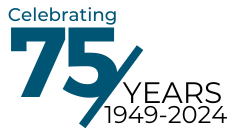Communication, dress codes, and office layouts: what is one thing that all three of these have in common? They have changed drastically in the past 100 years. The dynamics in the office today are truly different than they were even 20 years ago. Many companies are trying to figure out how they can appeal to the new generation of workers, Millennials, who are looking to ditch their desks, work from the confines of their home, or a more open collaborative workspace environment. Let’s take a walk down memory lane and see how the office has evolved.
Then: The Desktop Computer
Although some of you may remember writing with typewriters, the desktop computer is a significant invention in the world of offices. IBM launched the 5150 in 1981, one of the first computers that were comparable to the ones that we use today. Employees were astonished that they can edit files without using white out, send mail electronically without using any paper, and could move around words with the copy and paste options.
Now: Smart Devices
Smart devices like the Microsoft Surface Pro 3 are tablets that double as a computer. Many companies have their own tablets that they use at career fairs, trade shows, and other professional seminars. Smart phones have allowed for people to stay connected in and out of the office, no matter where their travels take them. The tablet and smartphone has allowed offices to become flexible with their employees ever changing schedules.
Then: Private Offices
Have you, like many of us, become enthralled in the television show Mad Men? Many people in the show worked in private offices and would often work behind closed doors. This was the case for many managers during the 1960s. Each person who had their own office would usually have their own receptionist that would interrupt them if someone were to come in. This was believed to allow for people to get work done without any distractions.
Now: Open Office Layouts
Today, we see the opposite of what was ideal in the 60s. Offices are being transitioned from traditional cubicles to open office layouts, which encourage collaboration with other employees. There is also a trend in offering an open-door policy, where CEO’s and managers leave their door open so that anyone can go into their office and approach them if they have a question.
Then: Suits and Ties for the Men, Dresses for the Women
The dress code for the office was very clear-cut and strictly enforced. Suits and dresses were the only wardrobe suitable in most offices; no matter if someone worked without any customer or client interaction. This was the dress code for most white-collar offices throughout the 20th century and is still seen in some offices today.
Now: Casual Dress Codes
In the 90s, offices introduced the business casual dress code, allowing office workers to ditch their dresses and suits. The tech industry was the first group to ditch semi-formal attire. Casual dress codes are most prevalent in fields that are mostly based around the Internet, but some companies offer their employees a chance to dress down on “casual Fridays.”
Then: The Office Chair
While some people would call this a “computer chair,” its history goes all the way back to the 1800s with Otto van Bismark during his time as the first chancellor of Germany. The version resembling today’s office chair was invented in the mid 1800s and its goal was to increase productivity of clerical employees, like secretaries and accountants, and allow them to move from one side of their desk to another efficiently. In the 1970s, ergonomic seating was invented, which allowed office workers to have better posture and less strain on the back while sitting.
Now: Alternative Office Seating
Many workstations now have multiple monitors, a phone, and plenty of file drawers. The task chair is perfect for the multitasker. Employees are looking for something different besides a mundane black or brown office chair. Many office furniture manufacturers, like Safco, are offering office stools, accent chairs, and ball chairs to change up an office’s landscape. These seats are ergonomic and help to reduce pain and discomfort when sitting for long periods of time.
Even in just twenty years, the office has changed drastically. Technology has evolved the office into a more open layout and has shifted the office to allow employees to be productive where they can connect.


